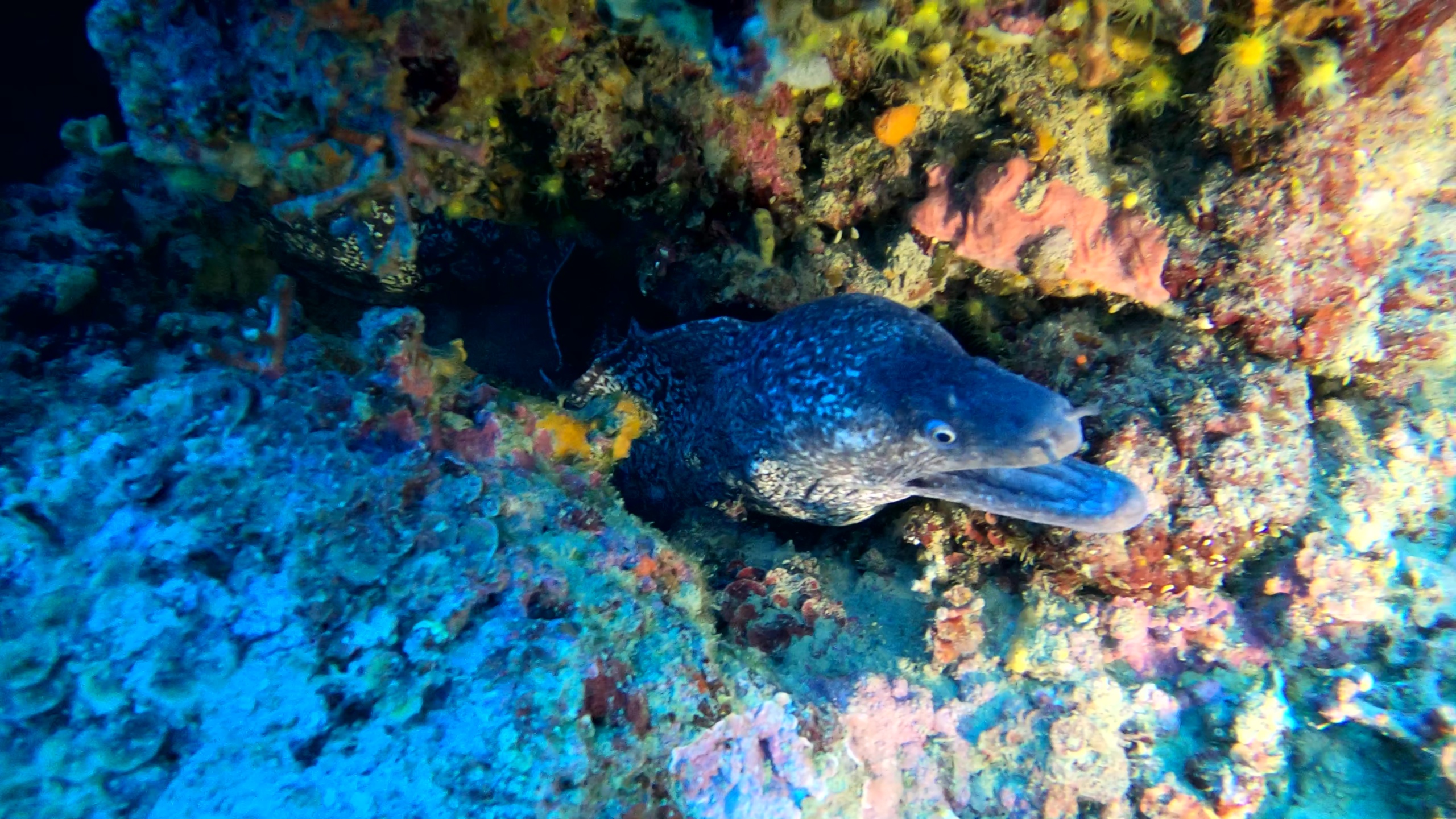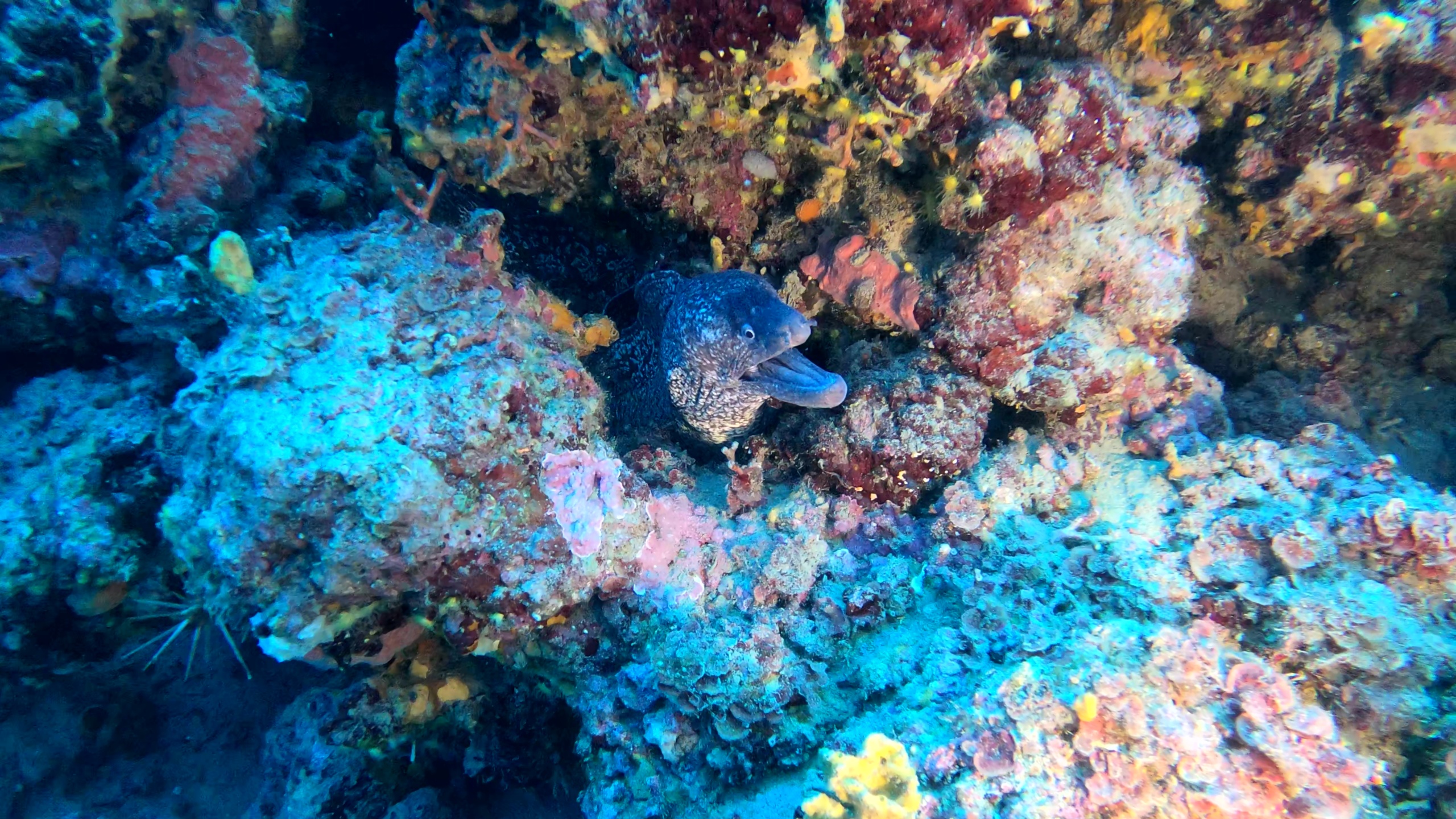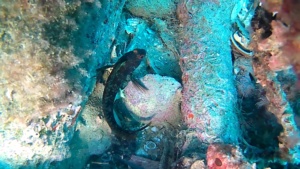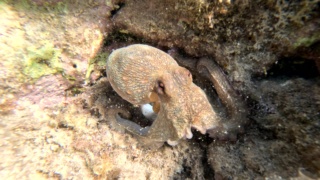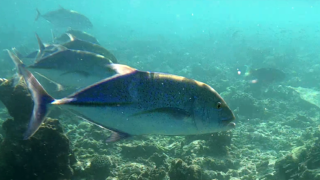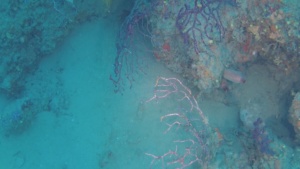Moray Eel is often identified as an aggressive and dangerous fish but as we can see from this video it is anything but an “evil titan of the seas”. We are on a rocky and coral seabed typical of the Mediterranean Sea at about 46/48 meters deep, where we often meet the Mediterranean moray Moray eel, Muraena helena, and in this case it is seen in the typical diurnal pose, i.e. with the head and a small part of the body outside its den while it rests from the nocturnal raids in search of food but always vigilant in controlling its own territory..
Being a territorial species it can become aggressive if it notices that its territory is being invaded but almost always attacks other fish or other moray eels it is rare that it attacks divers towards which it is more curious or even distrustful for which it prefers to escape by taking refuge in its lair.
Mediterranean moray (sometimes also called Roman eel, Muraena helena) is a fish of the moray eel family. It has a long eel-like body and is found in the eastern Atlantic Ocean and Mediterranean Sea. Its bite can be dangerous to humans.
Appearance and characteristics
Muraena helena showing typical moray eel morphology: robust anguilliform shape, lack of pectoral fins and circular gill openings. The Mediterranean moray has an elongated, eel-like body and can reach a length of 1.5 meters and weigh over 15 kilograms. Its coloration varies from dark grey to dark brown with fine dark spots.
Mediterranean moray spends most of the day in cavities and clefts between rocks and is more active at night. It hunts fishes, crayfishes and cephalopods, but also feeds on dead animals. The Mediterranean moray’s reproduction is not well known. They spawn about 60,000 eggs into open water, from which planktonic transparent leptocephali hatch. One parasitic crustacean, the trematode Folliculovarium mediterraneum and the flatworm Lecithochirium grandiporum are parasites of the Mediterranean moray.
Human importance
The bite of the Mediterranean moray can be dangerous mainly due to the mildly toxic slime of its skin. It can be utilized fresh and eaten broiled, boiled and baked. The skin can be used for leather.
Gallery
 English
English Italiano
Italiano
